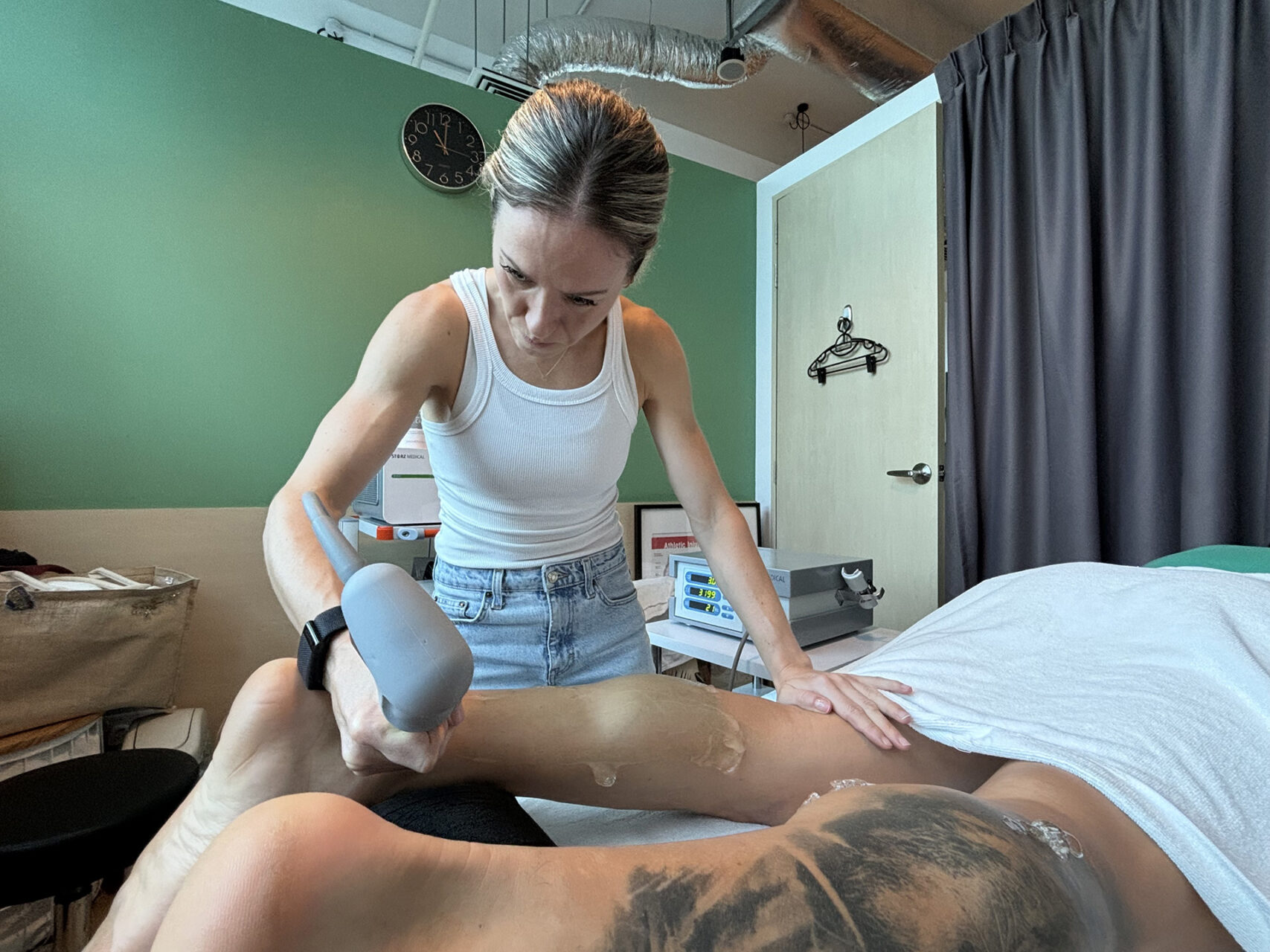|
Getting your Trinity Audio player ready...
|
If you’re experiencing a sharp, stabbing pain that shoots through your heel with every step, you’re probably dealing with Achilles tendonitis. This condition occurs when the Achilles tendon becomes inflamed. It is a common injury among active individuals, especially for runners, athletes and weekend warriors who push themselves too far.
Achilles tendonitis isn’t just an annoyance. It’s a condition that can sideline you from the activities you love. If left untreated, it can progress to more severe complications, such as tendon rupture. The good news is that most people can get back to full activity from Achilles tendonitis without surgery.
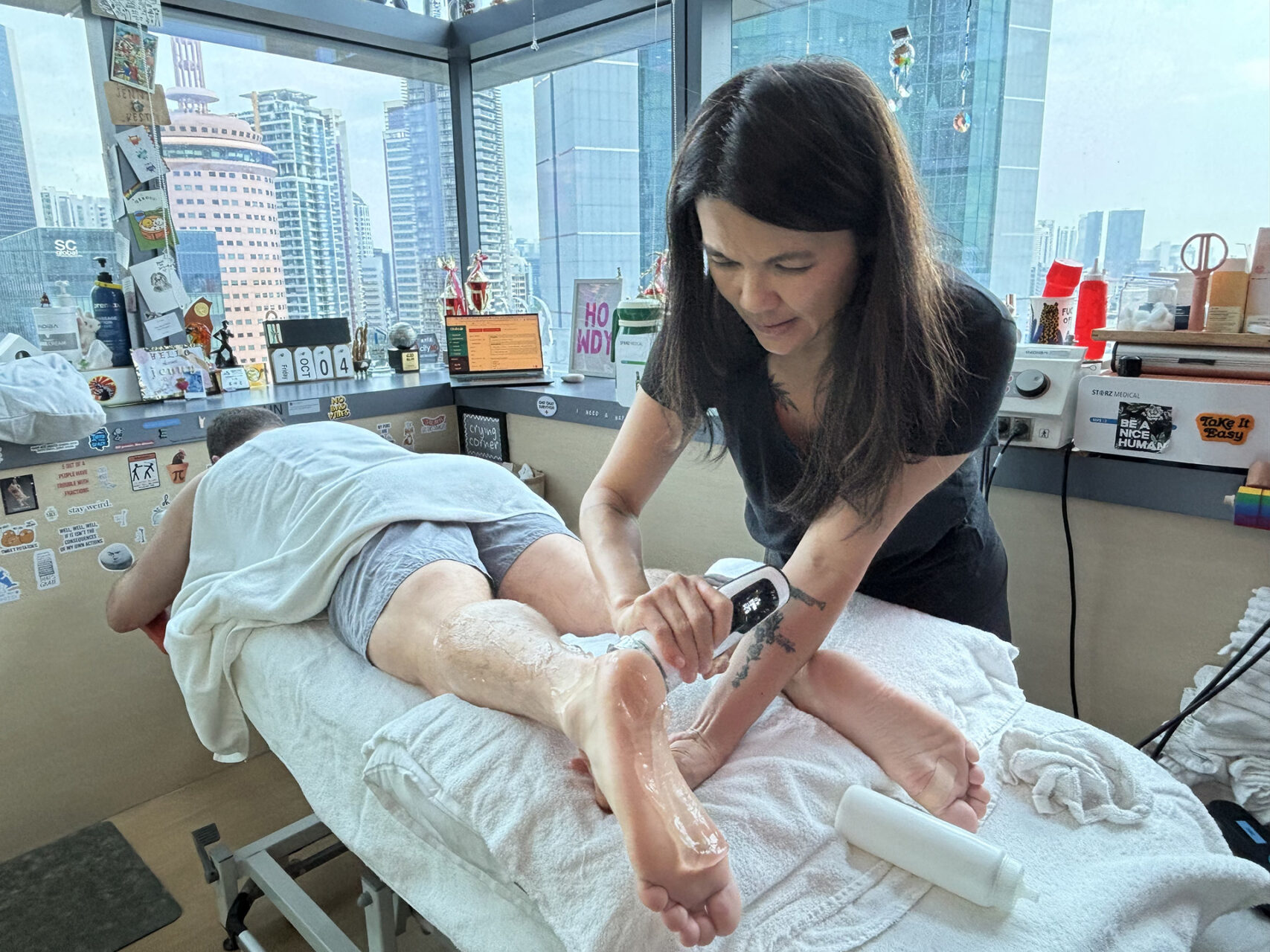
More Than Just Heel Pain
Your Achilles tendon is the largest and strongest tendon in your body, connecting the calf muscle to the heel bone. Anatomically, it’s located at the back of the ankle and is often referred to as the distal portion of the Achilles tendon. This amazing structure can withstand forces of up to eight times your body weight during activities like running and jumping. However, this impressive strength comes with a weakness; the tendon has poor blood supply, especially in the area slightly above your heel bone, and is a common site of Achilles tendon injuries.
Achilles tendonitis occurs when this tendon becomes inflamed, usually due to repetitive stress that exceeds the tendon’s ability to heal and adapt. This condition is closely related to Achilles tendinopathy, a broader term that encompasses both inflammation and degeneration of Achilles tendon tissue.
Achilles tendonitis comes in two forms:
- Insertional tendonitis affecting the area where the tendon attaches to the heel bone
- Non-insertional tendonitis involving the middle portion of the tendon
Pain and other symptoms of Achilles tendonitis may include swelling, stiffness and tenderness along the tendon. The pain often starts as a mild ache after exercise but can progress to constant discomfort that interferes with daily activities, limiting your range of motion. Many patients describe a burning sensation or sharp pain that’s most noticeable in the morning when taking their first few steps out of bed.

The Root Causes of Why Your Achilles Tendon Hurts
Understanding why Achilles tendonitis develops is important for both treatment and prevention. It rarely happens overnight and is usually the result of cumulative stress over time. Training errors are the most common culprits, especially sudden increases in activity, intensity or duration. The decision to double your running distance or add hill training without proper progression can be a dangerous trigger, leading to Achilles tendon injuries.
Biomechanical factors also play a significant role. Tight calf muscles, limited ankle flexibility or poor foot and ankle mechanics can create excessive stress on the Achilles tendon during movement. Age is another consideration. As we get older, our tendons lose some of their elasticity and become more prone to injury.
Worn-out running shoes that no longer provide adequate support, training on hard surfaces, or even changes in training terrain can contribute to the development of symptoms. Some individuals also have anatomical variations, such as flat feet or high arches, that predispose them to Achilles problems. Addressing these risk factors is crucial for preventing Achilles tendon injuries.
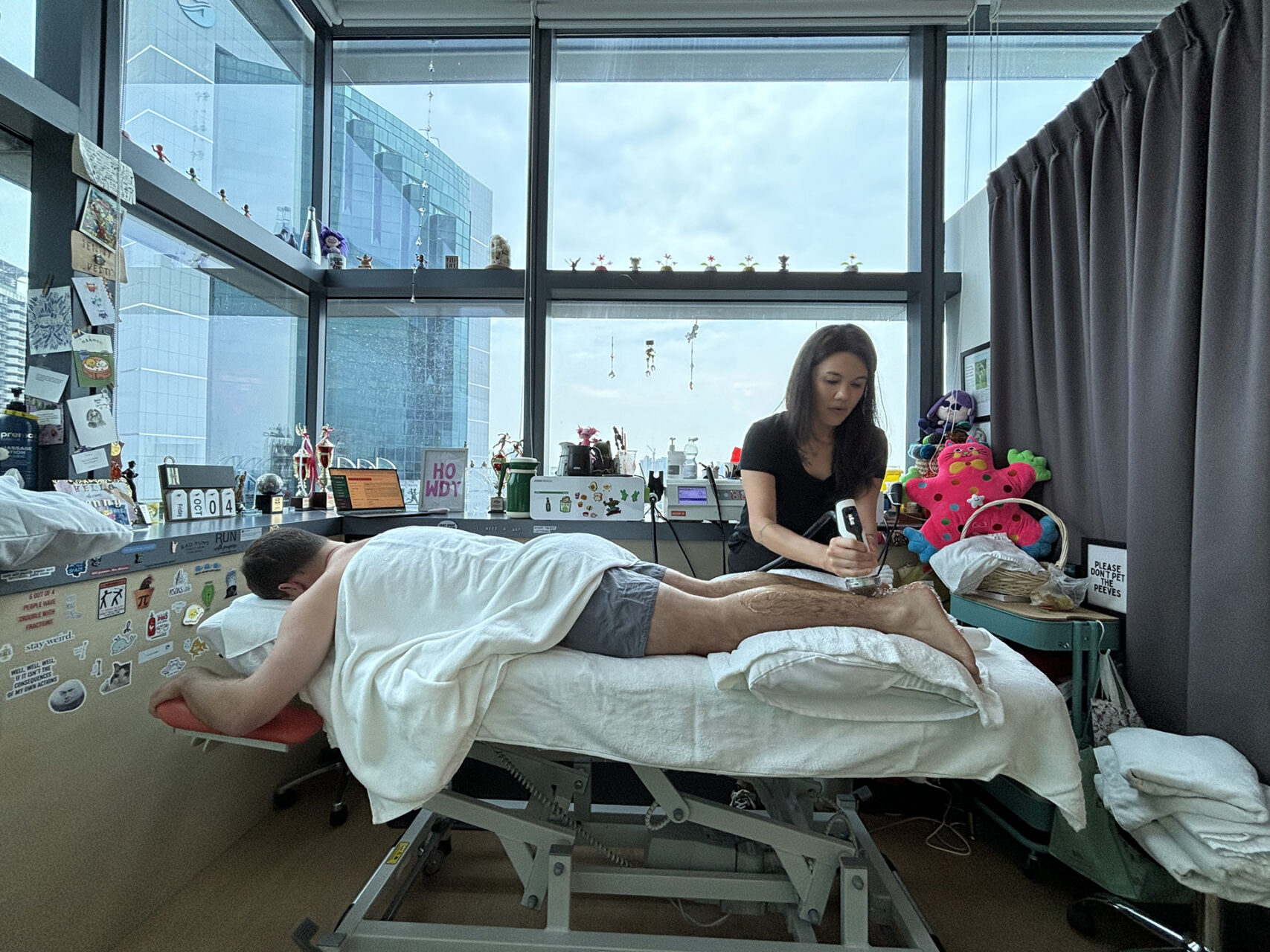
Building the Foundation for Recovery with Physiotherapy
When patients ask how to cure Achilles tendonitis fast, I tell them that there’s no magic overnight solution but that physiotherapy is the most effective way to achieve both immediate pain relief and long-term success. The key is to address not just the symptoms but the underlying factors that cause the condition in the first place.
In the early stage of management, the primary goals are to reduce swelling and manage pain. You can apply ice, elevate your foot and use compression bandages to reduce swelling. Over-the-counter medications such as NSAIDs can be used for pain relief and inflammation, but be aware of potential side effects, as these can prevent the body’s natural inflammatory processes from healing.
The cornerstone of physiotherapy treatment is progressive loading through eccentric exercises. These controlled lengthening contractions help stimulate tendon healing and remodeling. The classic heel drop exercise performed on a step is one of the most researched and effective interventions. The art lies in progressing these exercises appropriately. Too little stress won’t stimulate healing, while too much can aggravate the condition. That’s why supervision by a trained physiotherapist can help make your recovery sustainable and lasting in the long term.
Manual therapy techniques form another essential component of treatment. Skilled hands-on techniques help restore normal movement patterns, reduce muscle tension and improve blood flow to the affected area. Importantly, soft tissue mobilization of the calf muscles and tendons, combined with joint mobilization of the ankle and foot, can accelerate the healing process.
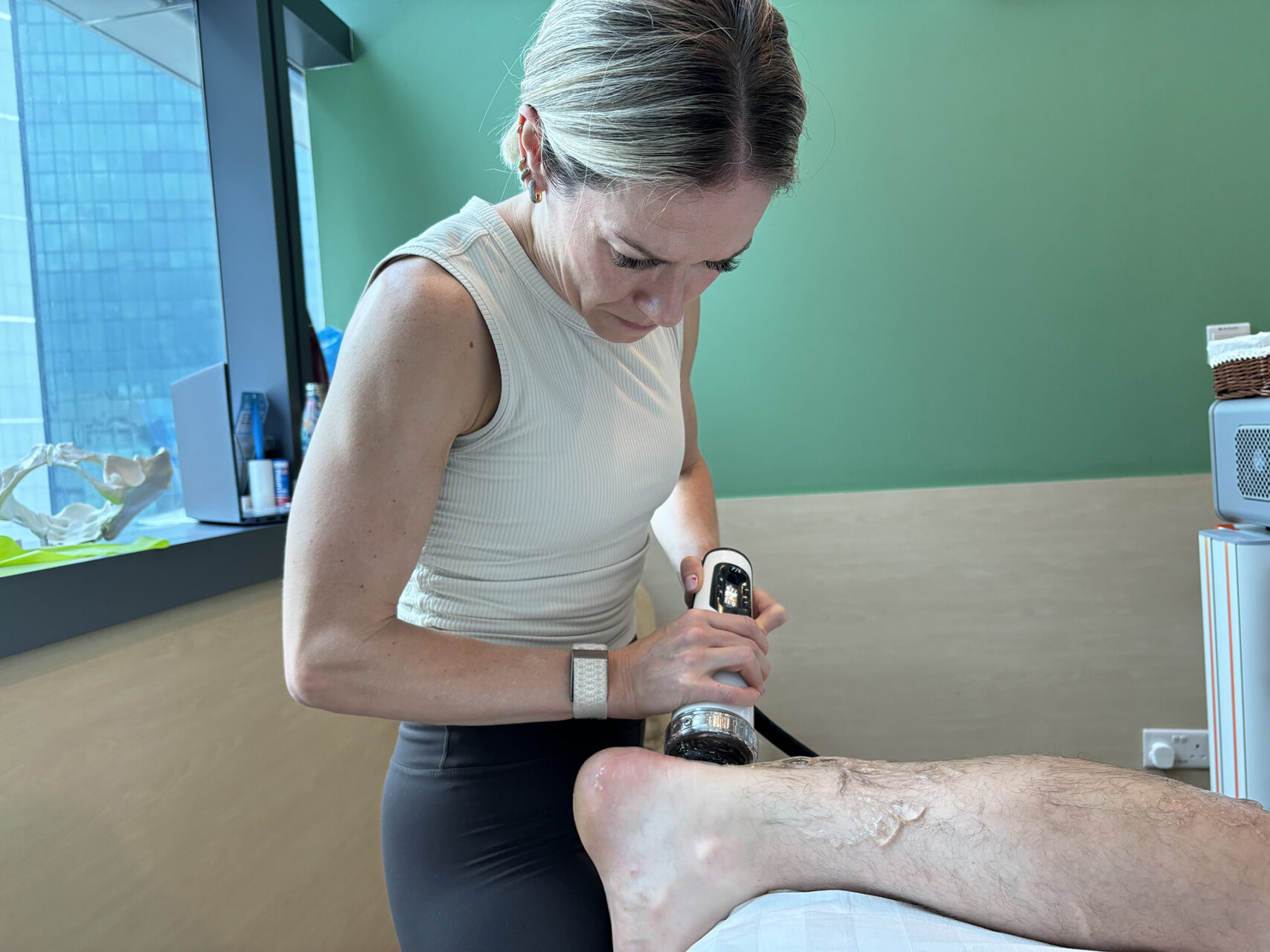
Advanced Treatment Modalities for Achilles Tendonitis
While traditional physiotherapy forms the foundation of treatment, advanced modalities can enhance outcomes, particularly for stubborn or chronic conditions. INDIBA® Activ therapy is one such advancement that has changed the way we approach tendon healing.
INDIBA uses radiofrequency energy to stimulate cellular regeneration at the deepest tissue levels. This non-invasive treatment enhances oxygen and nutrient delivery to the affected tendon, promoting the formation of new, healthy tissue. What makes INDIBA particularly useful for Achilles tendonitis is its ability to work at a cellular level, accelerating the natural healing processes that may have stalled in chronic conditions.
Patients often describe it as a gentle warming sensation and notice improved mobility and reduced pain within a few sessions. When combined with proper exercises, INDIBA can reduce the overall treatment time.
Shockwave Therapy is another tool in our treatment kit. This technology delivers acoustic waves to the affected tissue, creating controlled microtrauma that stimulates the body’s natural healing response. For Achilles tendonitis, Shockwave Therapy serves multiple purposes: it breaks down scar tissue that may be limiting tendon function, increases blood flow to the poorly vascularized tendon, and stimulates the production of growth factors essential for tissue repair of the Achilles tendon.
The combination of these modalities is key. While INDIBA optimizes the cellular environment for healing, Shockwave Therapy provides the mechanical stimulus needed to remodel the tendon structure. This combined approach often yields results that exceed what either treatment could achieve on its own.
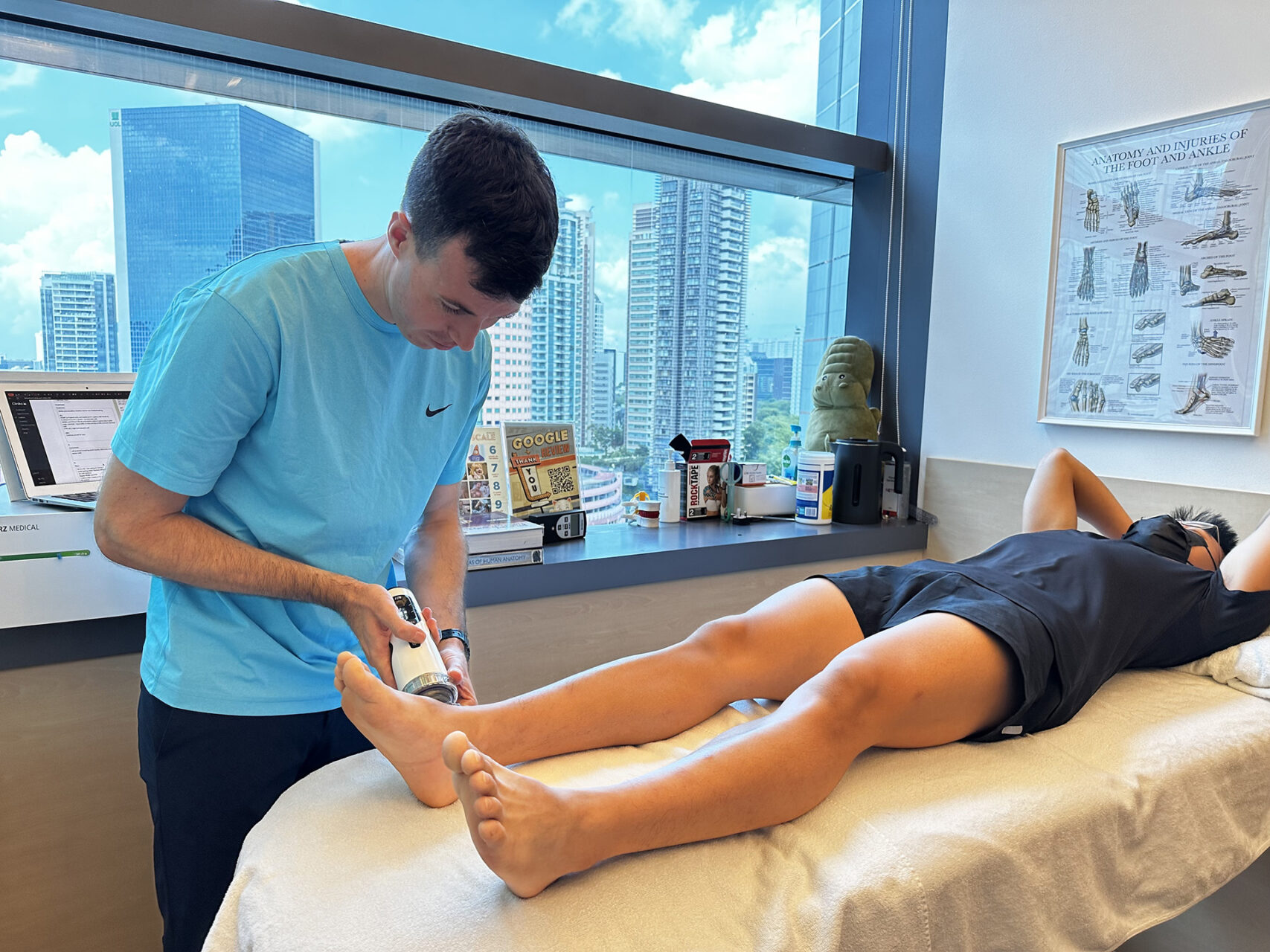
Integrated Treatment Timeline
Recovery from Achilles tendonitis is rarely linear. Understanding the typical progression can help set realistic expectations. In the acute phase of an Achilles tendon injury, which may last one to two weeks, the primary goals are pain reduction and protecting the tendon from further irritation. This doesn’t mean complete rest. In fact, appropriate activity modification and gentle movement are usually more beneficial than complete immobilization.
During this phase, treatments like INDIBA can be particularly useful for managing inflammation and pain while beginning the healing process. Manual therapy techniques focus on maintaining mobility and preventing compensatory movement patterns that could lead to secondary problems.
The subacute phase, which typically lasts two to six weeks, marks the beginning of more active rehabilitation. This is where progressive loading exercises become the centerpiece of treatment, gradually challenging the tendon to adapt and strengthen. Shockwave Therapy is often introduced during this phase as the acute inflammation has settled, and the tissue can better receive the mechanical stimulus.
The remodeling phase can last from six weeks to several months, depending on the severity of the injuries and individual factors. During this period, the focus shifts to activity-specific preparation, ensuring the tendon can handle the demands of your chosen activities without symptom recurrence.
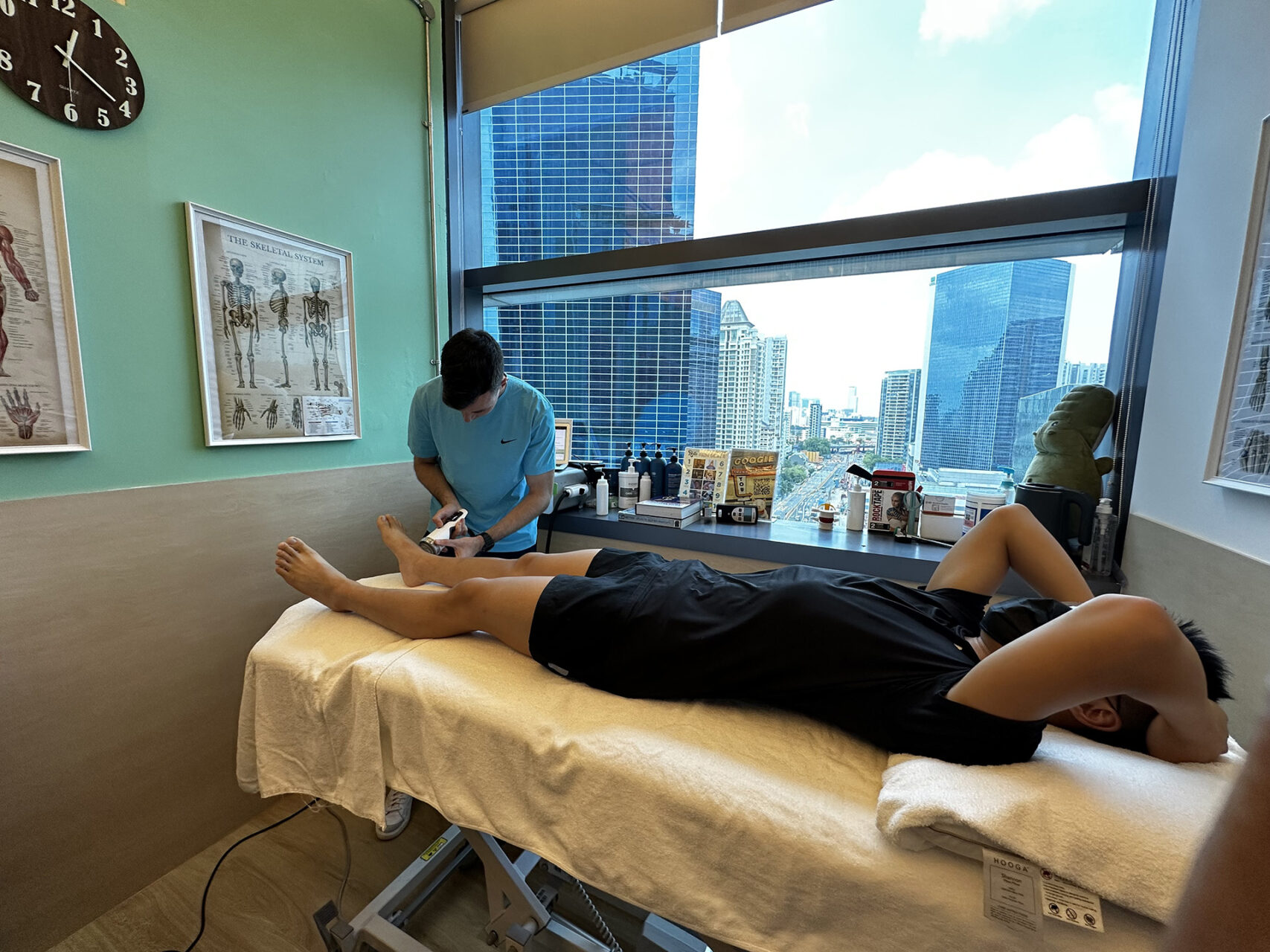
Lifestyle Modifications to Support Your Recovery
Successful treatment of Achilles tendonitis goes beyond clinic visits. Several lifestyle modifications can significantly impact your recovery journey and help prevent future episodes.
Proper footwear cannot be overstated. Shoes that provide adequate heel support and cushioning while maintaining proper flexibility are essential to long-term foot health. Stretching and mobility exercises can help improve your range of motion, which is crucial for restoring flexibility and movement in the ankle and foot. Sleep positioning may seem trivial, but it can also impact morning stiffness and pain. Many patients benefit from avoiding positions that keep the foot pointed downward for extended periods, as this shortens the calf muscles and increases tension on the Achilles tendon upon waking.
Nutrition plays a supporting role in tendon health. Adequate protein intake provides the building blocks for tissue repair, while anti-inflammatory foods, such as berries, avocados, and fatty fish, can help manage the inflammatory component of the condition. Hydration is equally important as tendons need adequate fluid levels to maintain their mechanical properties.
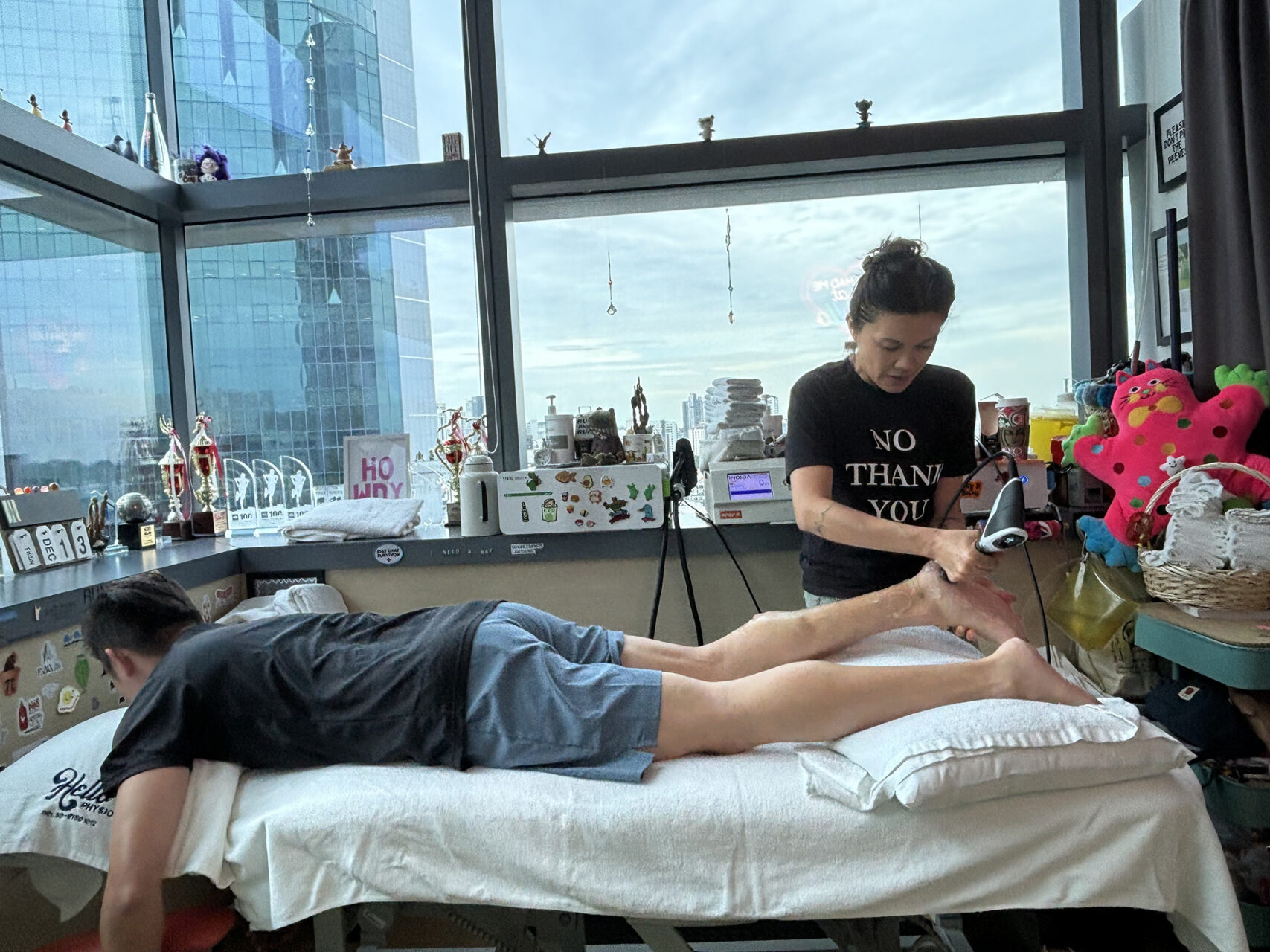
Prevention to Avoid Future Episodes
Once you’ve overcome Achilles tendonitis, prevention becomes a priority. Regular stretching and strengthening exercises should become part of your routine, not just something you do when problems arise.
Training modifications deserve special attention for athletes and active individuals, especially runners who are at higher risk for Achilles tendon issues. The 10% rule – increasing training volume by no more than 10% per week – provides a general guideline for safe and progressive training. Cross-training with low-impact activities, such as swimming, can help reduce repetitive stress on the Achilles tendon while maintaining cardiovascular fitness.
Environmental factors matter too. One way to prevent recurrence is to vary your running surfaces, replace worn-out footwear before it loses its supportive properties, and pay attention to your body’s signals. These simple ways to reduce stress on the tendon can help prevent the accumulation of problems that lead to Achilles tendon issues.

When to Seek Professional Help
If you experience severe pain in your ankle that limits your ability to walk normally, symptoms that persist despite rest and basic interventions, or any signs of tendon rupture (sudden severe pain often described as feeling like being kicked in the back of the leg), you should seek help promptly.
Achilles tendonitis doesn’t have to be a chronic limitation in your life. With the holistic approach of evidence-based physiotherapy techniques and advanced treatment modalities, most people can return to their full activity level and avoid recurring injuries.
If you’re looking to cure Achilles tendonitis fast and sustainably, contact HelloPhysio today to book your consultation and take the first step towards lasting relief and recovery.

